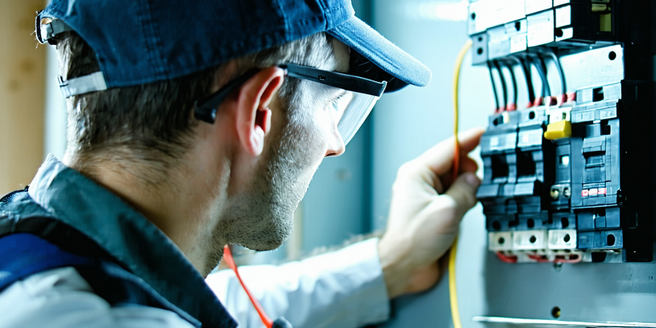Checklist For Free Electrical Safety Assessments

Understanding Electrical Safety Assessments
Electrical safety assessments are crucial evaluations aimed at ensuring your home’s wiring and electrical systems are safe and up to code. These assessments help identify potential hazards, such as outdated wiring or overloaded circuits, which could lead to fires or electrical shocks. During an assessment, a qualified electrician examines all electrical installations, verifies their condition, and ensures they meet safety standards. Understanding the importance of these assessments not only ensures compliance with regulations but also promotes peace of mind by safeguarding your home and family from electrical risks. Regular assessments are a proactive way to prevent accidents and maintain the integrity of your electrical systems, making them an invaluable component of responsible home management.
Why Opt for a Free Electrical Safety Check?
Opting for a free electrical safety check can provide significant peace of mind without any financial commitment. These checks are oftentimes offered by local utilities or electrical service companies to promote safety and awareness. They ensure that your home’s electrical system is functioning properly and identify potential hazards that could lead to costly repairs or dangerous situations if left unaddressed. Furthermore, a free check can highlight energy inefficiencies, providing opportunities to reduce energy bills by upgrading to more efficient systems. Taking advantage of a free electrical safety check underscores a proactive approach to home safety, emphasizing prevention over repair, and ensuring a safe and efficient living environment.
Essential Components of a Safety Assessment
When you schedule a safety assessment, it includes several crucial components. Firstly, the electrician will conduct a thorough inspection of your electrical panels and circuit breakers, verifying their current state and ensuring they meet safety standards. The next step involves checking outlets and switches for any signs of wear or incorrect wiring. The condition of your home’s wiring, including any aluminum or knob-and-tube wiring, is also evaluated to ascertain if replacement or repairs are necessary. Another vital component is assessing the grounding and bonding of electrical systems to ensure they can safely handle electrical faults. Evaluating the functionality and placement of smoke detectors and carbon monoxide alarms is also prioritized to ensure complete home safety.
Preparing Your Home for the Assessment
Preparing your home for an electrical safety assessment is simple yet important. Begin by making a list of known electrical issues or concerns you may have, such as flickering lights or frequently tripped breakers. Ensure easy access to your electrical panel and other key components such as outlets and switches. Clear any obstructions around major appliances and ensure that they are easily accessible to the electrician. It’s also helpful to gather any previous inspection reports or records of electrical work done in your home. By organizing this information and access, you facilitate a smoother assessment process, allowing the electrician to focus on diagnostics and providing you with a comprehensive evaluation outcome.
What to Expect During the Evaluation
During the evaluation, expect a detailed inspection of your entire electrical system by a qualified professional. The electrician will check the wiring, outlets, and electrical panels for signs of deterioration or potential hazards. They will also test the functioning of your lighting and appliances to identify any inefficiencies or safety concerns. Throughout the process, the electrician will note any issues encountered and explain their relevance to your home’s safety. Additionally, they provide recommendations for necessary repairs or upgrades. Anticipate being briefed on both minor and major findings, with an emphasis on necessary corrective actions to maintain or achieve compliance with electrical safety standards.
Post-Assessment Actions and Follow-Ups
After the assessment, you will receive a detailed report outlining the findings and recommended actions. It may highlight necessary repairs, upgrades, or maintenance tasks needed to enhance the safety of your electrical system. Promptly scheduling any recommended repairs is crucial in addressing safety concerns. Moreover, it is beneficial to establish a regular assessment schedule to keep your systems in optimal condition. Follow up with your electrician for any clarification or commitment to executing repairs, especially when significant issues are uncovered. Furthermore, make use of the insights gained to negotiate with electrical service providers or fitters if broader system upgrades are needed. Continuous monitoring and follow-up ensure your home remains safe and efficient in the long term.